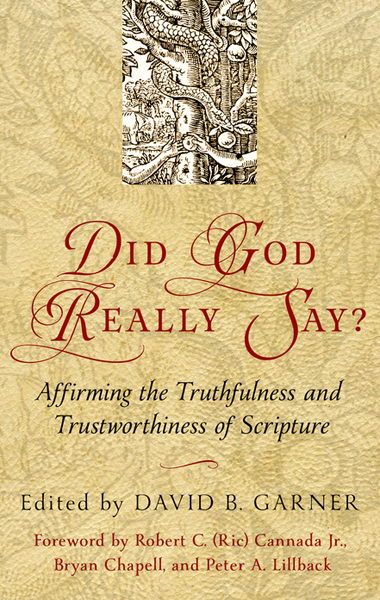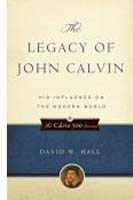
The historicity of the Jesus’ resurrection is a non-negotiable of the Christian faith. If a person does not believe that Jesus rose bodily from the dead, then they are not a Christian. The apostle Paul includes the resurrection of Jesus as a matter of first importance to the gospel (1 Cor. 15:1-4). He tells us that if Jesus has not been raised from the dead then our faith is futile and we are in fact still in our sins (1 Cor. 15:17).
The resurrection of Christ has vital applications to the believer. Just as Christ death applies to the believer, so Christ’s resurrection is applied to the believer through the Holy Spirit. For both the accomplishment and the application of redemption there needs to be a resurrection that takes place for Jesus Christ.
But God’s Word also ties this Christ event and the representation that it gives to a historical Adam and the representation that he gave for humanity. While the historicity of Adam is not included in the matters of first importance at one’s confession of faith (1 Cor. 15:1-4), Paul nevertheless draws a link between the reality of Christ’s resurrection and a real historical Adam. Just as there was a real resurrection, the benefits of that resurrection are patterned after a real Adam and what happened to him.
The prevailing winds even within the church today would like to convince the believer that we can dispense with Adam as a historical figure at the same time leaving core teachings about Christ in place. There is no end to the Biblical scholars, writers, and scientists encouraging the faithful that we can keep good Christian doctrine while shedding the archaic belief that Adam was a real person. The books, essays, and blogs seek to argue, persuade, and cajole us into finding a real Adam unnecessary, unrealistic, and even an abhorrent product of childish naivety.
The pressure can be tempting and intense. But we need to go back to what the Word of God says and humbly take our stand there. Fundamental to the Bible’s picture of redemption is a history with two anchor points: one in Jesus Christ and the other in an historical Adam. It is no stretch of Biblical logic to say we cannot have one without the other.
The Apostle Paul, inspired by the Holy Spirit and writing the very Word of God, thought Adam was vital to understanding Christ. Something happened to Jesus Christ just as much as something happened to Adam. For the Biblical portrait of redemption, Adam has to be just as real as Jesus Christ.
Consider some selected verses from 1 Cor. 15:
vv.20-22 But in fact Christ has been raised from the dead, the firstfruits of those who have fallen asleep. For as by a man came death, by a man has come also the resurrection of the dead. For as in Adam all die, so also in Christ shall all be made alive.
Paul believes that death entered creation through the act of one man. This event is not a mythic construct nor is Adam just a symbol of a future Israel. Adam was real, he did something (he sinned) and therefore death entered into creation. Just as Adam really sinned and his posterity are born under a death sentence so also Christ truly rose from the dead and in Him His posterity shall be made alive.
Many well meaning Christians believe wholeheartedly in a bodily resurrection that happened to Christ and will happen to us but are willing to deny a real Adam who actual did something. But for Paul and the Biblical structure of redemption you cannot have one without the other.
Paul continues later on, making the parallel more explicit: Jesus Christ is a second Adam:
v.45 Thus it is written, “The first man Adam became a living being”; the last Adam became a life-giving spirit.
Jesus Christ in his resurrection state ascends bodily into heaven from where He sends the Holy Spirit. This is a non-negotiable to the Christ faith. Jesus Christ actually became a life-giving Spirit because these things actually happened to Him. Again though for Paul, there is a connection to the Genesis narrative. There was a point in time where the first Adam actually became a living being. Paul sees Adam as a real, literal, historical person created by the special act of God whereby God breathed life into Him.
The Biblical worldview operates with a clear pattern between the first and the second Adam. Just as things happened to the first Adam, Paul assures us that things happened to the second Adam. In our 21st century context, we need to follow the tether line backwards: just as the bodily resurrection of Christ is real, historical and clear so also should we say the same about Adam.
vv. 46-49 But it is not the spiritual that is first but the natural, and then the spiritual. The first man was from the earth, a man of dust; the second man is from heaven. As was the man of dust, so also are those who are of the dust, and as is the man of heaven, so also are those who are of heaven. Just as we have borne the image of the man of dust, we shall also bear the image of the man of heaven.
Adam is not a symbol or a myth. He was not one who was chosen out of a mass of already existing humans nor was he the first at the apex of an evolutionary process. Rather God, through a special act of creation, fashioned him. How do we know? We bear his image. All human beings descend from him and are products of the dust. Paul affirms a real Adam: a “man of dust.” There was a historical event where Adam became a living being.
But Christ in His human estate is the heavenly man. He has been transformed into a state of glory and honor. What was sown in weakness is now raised in power. We would not dare deny that Christ was raised in power, therefore let us also not deny that in the original Adam humanity was indeed sown by the hand of God in weakness.
 Tim Bertolet is a graduate of Lancaster Bible College and Westminster Theological Seminary. He is an ordained pastor in the Bible Fellowship Church, currently serving as Interim Pastor of Faith Bible Fellowship Church in York, Pa. He is a husband and father of four daughters. You can follow him on Twitter @tim_bertolet.
Tim Bertolet is a graduate of Lancaster Bible College and Westminster Theological Seminary. He is an ordained pastor in the Bible Fellowship Church, currently serving as Interim Pastor of Faith Bible Fellowship Church in York, Pa. He is a husband and father of four daughters. You can follow him on Twitter @tim_bertolet.

The Alliance of Confessing Evangelicals is member supported and operates only by your faithful support. Thank you.















 © Alliance of Confessing Evangelicals
© Alliance of Confessing Evangelicals


